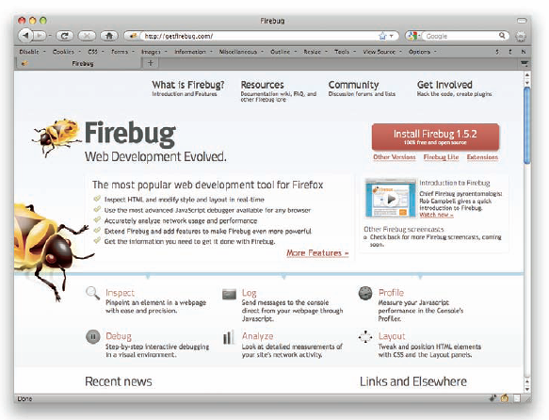Chapter 1. TOOLS
THE PROCESS OF building Web pages (or even applications), like anything else, is greatly helped by the use of tools. When it comes to CSS, there are both tools to help us write the CSS and the use of CSS to construct tools that help us out.
There are even tools out there that make browsers support more CSS than their native code base can bear. You're a builder, a crafter, a maker—this chapter details some things that will really flesh out your toolbox.
FIREBUG
Firebug (see Figure 1-1) is one of two utterly essential tools in any Web creator's toolbox. (For the other one, jump ahead to the "Web Developer Toolbar" section.) It's a completely free extension to the completely free Firefox. If you're using another browser, keep reading: You can get in on the Firebug action too!

Figure 1.1. The Firebug home page.
To get your copy, go to getfirebug.com in Firefox. Click the Install button (it's on the upper-right as of this writing) and let it install. Relaunch Firefox and prepare to be amazed.
There's no way I can cover everything Firebug is capable of doing in this single tip; in fact, a whole chapter would not be enough. Here are some highlights.
The HTML tab (see Figure 1-2) shows you the document structure on the left (with twisty arrows to expand or collapse subtree of the document). Note that when you hover over an element name in the HTML tab, that element is highlighted ...
Get Smashing CSS: Professional Techniques for Modern Layout now with the O’Reilly learning platform.
O’Reilly members experience books, live events, courses curated by job role, and more from O’Reilly and nearly 200 top publishers.

